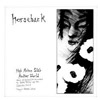
Pairing one of Matthew Bower's newer projects with Jenks Miller’s minimalist metal band is a wise move for Turgid Animal, and this 10" delivers the expected amount of guitar-focused chaos from both artists.
Two new shows just for you. We have squeezed out two extended release episodes for this weekend to get you through this week. They contain mostly new songs but there's also new issues from the vaults. The first show features music from Rider/Horse, Mint Field, Robert Aiki Aubrey Lowe, Anastasia Coope, ISAN, Stone Music, La Securite, Bark Psychosis, Jon Rose, Master Wilburn Burchette, Umberto, Wand, Tim Koh, Sun An, and Memory Drawings. The second episode has music by Laibach, Melt-Banana, Chuck Johnson, X, K. Yoshimatsu, Dorothy Carter, Pavel Milyakov, Violence Gratuite, Mark Templeton, Dummy, Endon, body / negative, Midwife, Alberto Boccardi, Divine. Cow in Maui from Veronika in Vienna. Get involved: subscribe, review, rate, share with your friends, send images! |

Pairing one of Matthew Bower's newer projects with Jenks Miller’s minimalist metal band is a wise move for Turgid Animal, and this 10" delivers the expected amount of guitar-focused chaos from both artists.
 In its fourth iteration (including the Gristleism special edition), the duo of Christiaan Virant and Zhang Jian have once again created a small box of rudimentary loops that, in its increased technological capacity, has somewhat diminishing returns.
In its fourth iteration (including the Gristleism special edition), the duo of Christiaan Virant and Zhang Jian have once again created a small box of rudimentary loops that, in its increased technological capacity, has somewhat diminishing returns.
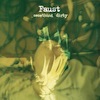 Over the past few albums, Jean Hervé-Peron and Zappi Diermaier’s version of Faust have been getting more and more into the rock side of their krautrock. On this latest release, they have fully embraced rock and roll to the point where rock has become pulverised and the roll is in free-fall. Hints of classic rock (as in 1950s rock, not ‘70s dad rock) are smashed into atoms and reconstituted as something new, something loud and Something Dirty.
Over the past few albums, Jean Hervé-Peron and Zappi Diermaier’s version of Faust have been getting more and more into the rock side of their krautrock. On this latest release, they have fully embraced rock and roll to the point where rock has become pulverised and the roll is in free-fall. Hints of classic rock (as in 1950s rock, not ‘70s dad rock) are smashed into atoms and reconstituted as something new, something loud and Something Dirty.
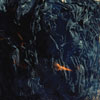 Ghostly International presents SMM: Context as a vaguely philosophical release centered around the qualities that film soundtracks, classical music, and ambient music share, but I think its lack of pretense is part of what makes it great. On one level, SMM: Context is just a collection of eleven songs from eleven electronic artists, including Leyland James Kirby, Jacaszek, Aidan Baker, and Kyle Bobby Dunn. On another level, it's a very coherent and fluid record filled with beautiful songs and sustained by a shared vision.
Ghostly International presents SMM: Context as a vaguely philosophical release centered around the qualities that film soundtracks, classical music, and ambient music share, but I think its lack of pretense is part of what makes it great. On one level, SMM: Context is just a collection of eleven songs from eleven electronic artists, including Leyland James Kirby, Jacaszek, Aidan Baker, and Kyle Bobby Dunn. On another level, it's a very coherent and fluid record filled with beautiful songs and sustained by a shared vision.
 For their third LP for Sublime Frequencies, the group has put together a stunning collection of trance-inducing works. Yet, there are two things that set Beatte Harab apart from Group Doueh’s previous albums. The recording quality is a step above the others: granted the overall quality is not high fidelity but gone is the murk so all the instruments and singers can be heard distinctly. Secondly, Doueh himself has moved more into the background. His deft touch of the fretboard is undiminished but he confines himself to the back of the mix, his playing developing the overall shape of the music without dominating the other performers.
For their third LP for Sublime Frequencies, the group has put together a stunning collection of trance-inducing works. Yet, there are two things that set Beatte Harab apart from Group Doueh’s previous albums. The recording quality is a step above the others: granted the overall quality is not high fidelity but gone is the murk so all the instruments and singers can be heard distinctly. Secondly, Doueh himself has moved more into the background. His deft touch of the fretboard is undiminished but he confines himself to the back of the mix, his playing developing the overall shape of the music without dominating the other performers.
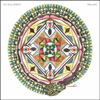 The latest opus from these prolific and chameleonic Swedes finds them in full-on primal rock mode, unearthing another batch of jagged, bludgeoning, and repetition-obsessed songs and reminding me that rock music can still be a bit dangerous and scary. There's a big twist this time around, however, as the Defekts have added a very noteworthy fifth member: the rather singular Daniel Higgs, formerly of Dischord art-punk stalwarts Lungfish. The addition proves to be an inspired move, as Higgs' intense, somewhat unsettling persona serves to highlight the darker, weirder side of the band.
The latest opus from these prolific and chameleonic Swedes finds them in full-on primal rock mode, unearthing another batch of jagged, bludgeoning, and repetition-obsessed songs and reminding me that rock music can still be a bit dangerous and scary. There's a big twist this time around, however, as the Defekts have added a very noteworthy fifth member: the rather singular Daniel Higgs, formerly of Dischord art-punk stalwarts Lungfish. The addition proves to be an inspired move, as Higgs' intense, somewhat unsettling persona serves to highlight the darker, weirder side of the band.
 A sensitive and spacious work, To R.S. utilizes a variety of traditional instruments (guitars, pianos, natural sounds, etc) in a completely different context, dissolving the known sounds into sparse, pure tones and subtle variations. As a work dedicated to composer Robert Schumann, it’s quite an accomplished slice of minimalism in its own right.
A sensitive and spacious work, To R.S. utilizes a variety of traditional instruments (guitars, pianos, natural sounds, etc) in a completely different context, dissolving the known sounds into sparse, pure tones and subtle variations. As a work dedicated to composer Robert Schumann, it’s quite an accomplished slice of minimalism in its own right.
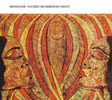
When I reviewed Bionulor’s debut release a bit less than two years ago, I complimented his conceptual use of "sound recycling," but felt the compositions lacked focus and structure. On this sophomore release, Sebastian Banaszczyk has definitely stepped up his game, and the results are quite satisfying

A limited cassette release of an even more limited CD-R, Chicago's Sun Splitter, in the span of around 30 minutes, condense all of what I consider to be the best moments of the past 40 years of metal. With elements of drone, doom, industrial, and even classic rock, it all comes together as a perfectly conceived release.
 In the duo 39 Clocks, Juergen Gleue upset everyone from beer-loving Bavarians to Joseph Beuys. Apparently, shitting on organs, playing vacuum cleaners, mocking the art world and using a drum machine saw them regularly abused and hurled from a variety of scenes. Phantom Payn Daze is the sound of Gleue recorded solo in the 1990s after a period over-immersed in drink and drugs. It adheres to the Clocks' version of beauty: as simple as rural blues and raw as early psych-pop, with a beguiling twang and metronomic propulsion looking ahead to Tarwater and back to The Velvet Underground.
In the duo 39 Clocks, Juergen Gleue upset everyone from beer-loving Bavarians to Joseph Beuys. Apparently, shitting on organs, playing vacuum cleaners, mocking the art world and using a drum machine saw them regularly abused and hurled from a variety of scenes. Phantom Payn Daze is the sound of Gleue recorded solo in the 1990s after a period over-immersed in drink and drugs. It adheres to the Clocks' version of beauty: as simple as rural blues and raw as early psych-pop, with a beguiling twang and metronomic propulsion looking ahead to Tarwater and back to The Velvet Underground.